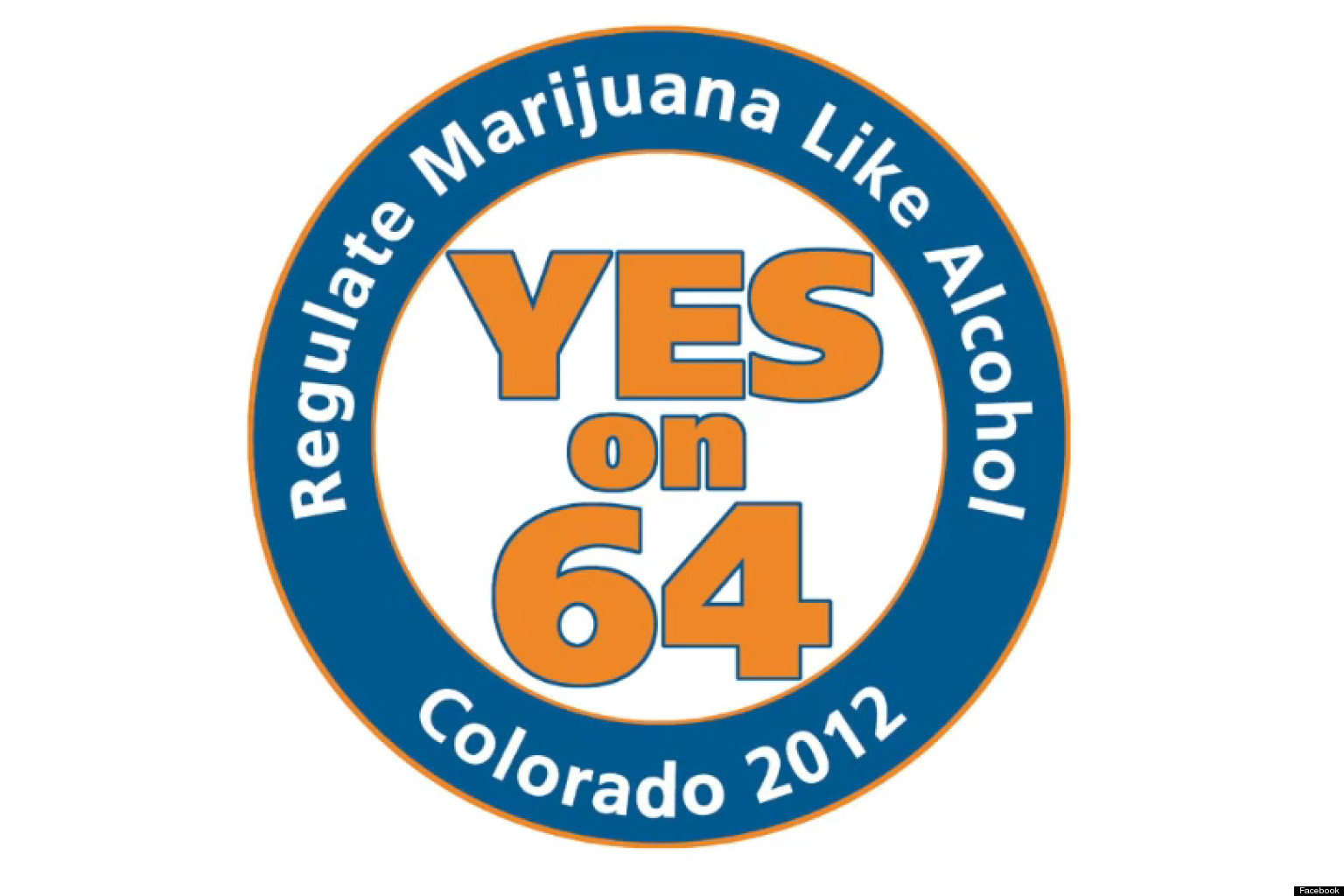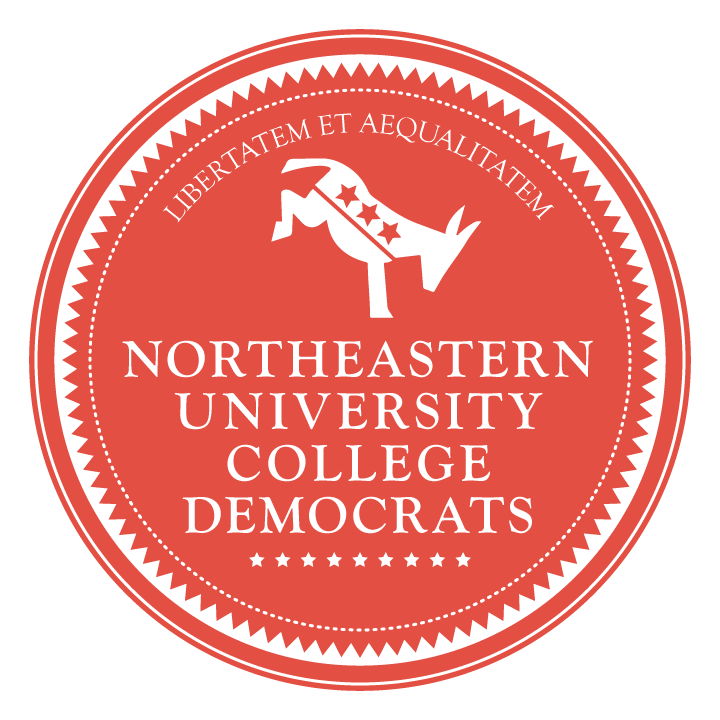“Please drink responsibly.” These words are etched into every bottle of booze and embedded into the fine print of television advertisements, reminding consumers that the producers and distributors of beer, wine, and spirits have the public’s best interests in mind. However, as public policy expert Mark Kleiman notes: “responsible drinkers don’t build breweries.”[1] The business model of a company selling a vice — like alcohol, marijuana or gambling — relies on finding the heaviest users and creating as many of them as possible. As the US moves toward the commercialization and regulation of marijuana, the interests of the private commercial industry must be balanced with the public interest. The regulation of the marijuana industry represents an opportunity for increased public revenue in the form of taxation, but the transition from illicit to licit production creates further challenges for regulators and policymakers. Social change also influences policy, and vice versa, potentially solving issues regulation cannot. Understanding the intricacies of alcohol policy, and some aspects of tobacco policy, in the US can serve to inform the development of marijuana policy. Although drug policy in the US may be undergoing a significant change, the complexity of the transition between licit and illicit drug production and consumption is not without policy challenges, which are largely glossed over in mainstream legalization rhetoric.
Italian economist Vilfredo Pareto observed in the late 19th century that 80 percent of land in Italy was owned by 20 percent of the population, and that 20 percent of the peapods in his garden yielded 80 percent of the harvested peas.[2] Thus, the Pareto principle dictates that 80 percent of inputs are responsible for 20 percent of results. This principle manifests in alcohol consumption in the US. Ignoring the roughly one-third of the US population that doesn’t drink, and dividing the remaining 60 percent into deciles, the top two deciles (20 percent of drinkers) are responsible for roughly 80 percent of alcohol consumption in the US, and the top decile (10 percent of drinkers) is responsible for roughly 50 percent of alcohol consumption.[3][4] The average, for that top decile, is four drinks per day, every day, year-round.[5] The same is true in marijuana consumption, the vast majority of pot is smoked by the heaviest users. The National Institute on Drug Abuse estimates that 42.8 percent of respondents, ages 12 and up, have smoked pot in their lifetime.[6] However, only 7.3 percent of those users smoked in the last month, or 17.4 million past-month users in 2010, with an estimated 5.4 million daily users.[7] In contrast, roughly 58.6 million age 12 and up reported past month binge drinking.[8] The focus on the minority of users, in this case abusers, of any particular vice comes from the negative externalities they create as a consequence of their abuse, such as violence, crime, poor health, unemployment, and others. The negative externalities created from the heavy drinkers compared to the heavy pot smokers are vastly different, but as with any policy governing addiction, the regulation of irresponsible use is confined to a small percentage of the total population.
These heavy users, of marijuana and of alcohol, represent a conflict of interest between commercial industry and the general public. The public interest revolves around any regulatory environment created for a vice providing the vast majority of legal users the ability to consume responsibly, while controlling for the minority whose use creates negative consequences. By contrast, the commercial free market, when left to govern products like electronics and clothing, does an extraordinarily good job at providing products to consumers at high-perceived quality and low price. Since for-profit firms seek to maximize profits, and the most profitable users of any commodity are the frequent, binge users, the commercial for-profit industry created around maximizing profits becomes a commercial industry that maximizes addicts. Marketing directed towards consumers of alcohol and tobacco is extremely profitable, exemplified by the extensive nature of Bud Light advertisements and the aforementioned number-one brand selling 270 million cases in 2012.[9] Budweiser also “…holds a disproportionate 15 percent of the market amongst those who end their nights in the ER for some sort of injury.”[10] In the 1950s and 1960s, cigarette advertisements included such slogans as “Winston, taste good like a cigarette should”[11] and “Us Tareyton smokers, I’d rather fight than switch.”[12] Tobacco marketing campaigns were pervasive, targeted, and extremely effective.
However, it is misleading to place undue responsibility for corporate citizenship on for-profit firms – non-profits are not necessarily aligned with public interest either. For example, the Ohio State University football coach makes $4.5 million a year, and is not necessarily overtly concerned with concussions among his players. [13] Upton Sinclair once said, “It is difficult to get a man to understand something, when his salary depends on his not understanding it.”[14] Regardless of the marijuana regulatory regime, be it medicinal or recreational, for-profit and non-profit commercial interests are fundamentally contrary to public interest.
Despite the ostensible incompatibility of public and commercial interest, public policy can aid in controlling a vice market in such a way to prevent private marketing from working too well. A major component of that policy is taxation. Mark Kleiman cites a Johnny Walker Black advertisement that says, “If the difference in price between Black and ordinary scotch matters to you, you’re drinking too much.”[15] Price matters, and therefore tax matters, to industry, to government, and to the general public. Much of the rhetoric surrounding marijuana legalization purports the billions of dollars in government revenue taxation of marijuana would yield. In some scenarios, taxes of $25-$50 per ounce could yield a few billion for states, plus the additional savings stemming from reduced enforcement costs.[16] However, a group of researchers have suggested that the application of modern agricultural technology to the cultivation and production of marijuana would yield prices similar to “…other legal herbs such as tea or tobacco….”[17]
The result of the efficiency of American farms, and the relatively speaking small size of the market, would be pot that costs roughly the same as a packet of Splenda.[18] In order to keep the market price at the desired level, the taxation would have to be extraordinarily high. High taxation would have several effects. First, the industry, including producers, transporters, retailers and others would lobby and fight to keep the tax stagnant, or to reduce the tax. Second, tax evasion would become a concern, with incentives built in for criminals to bring pot into the US that would not have been subject to the tax, undermining a supposed benefit of legalization. Third, even if the taxation regime were as effective as the tobacco tax, which generated roughly $15 billion federally and $17.5 billion for states in 2012, that revenue does not balance the budget in terms of the overall deficit: Massachusetts collected roughly $540 million in cigarette excise tax and currently has a deficit of $102 billion.[19] In order for the tax to be a net positive, the funds would need to be allocated to effective prevention, harm reduction and treatment programs to offset the negative externalities of the vice. Fourth, and arguably most troubling, the high taxation of marijuana results in a dynamic where the state profits off of the same addict-maximizing system created by commercial industry.
None of these issues are necessarily arguments for or against legalization — all policy decisions create consequences and those consequences can be mitigated. For example, money collected from taxation could be reinvested in drug treatment programs, or taxation could be in the form of THC production and distribution licenses auctioned off to the highest bidder. In addition, no policymaker is going to oppose programs that generate or save revenue, no matter the amount. In Colorado, plans already exist to reinvest tax revenue in drug education and addiction treatment programs. Effective drug policy seeks to reduce and offset the negative consequences of vice usage, while trying to mitigate consequences from the policy itself.
Public policy can only do so much, and many of these issues contain a component of social change that is required in order to legislate effectively. Examples of socialization into the practice of widespread marijuana use have analogues in the socialization into alcohol consumption. Proponents of a lower drinking age cite the “European” model, that drinking in a social setting, with family or otherwise, at a young age may lead to reduced binge-drinking tendencies in adult years. Data backing these assumptions vary, but a similar example of socialization is seen at upper-middle class Australian dinner parties, where it is not uncommon for a joint to be passed around before the meal begins.[20] This kind of social behavior, in contrast to binge behavior, is perfectly acceptable and produces few negative externalities. The socialization process is difficult, generational, and can be uneven across a region as large as the US. Therefore, encouraging this kind of responsible, social behavior through public policy is an ongoing challenge, regardless of the activity or vice being regulated.
Social change, like a culture of responsible drinking or pot smoking, can have positive effects on policy, and vice versa. For example, the cigarette ads cited earlier were banned from television and print advertising through legislative action, mostly directed at preventing children from being subjected to targeted tobacco advertising. It could be argued that the scientific consensus on the negative effects of smoking, and consequent societal shift away from smoking, drove policy to regulate the tobacco industry more heavily, rather than the policy changing societal norms. The trend of social norms influencing policy can be seen at Northeastern, where a smoke-free campus was recently established, following the generational trend of anti-smoking behavior and policy. These two forces, social change and public policy, can work to be mutually reinforcing, making policy more effective and change more ubiquitous.
A recent Rasmussen poll “…shows that 56 percent favor legalizing and regulating marijuana in a similar manner to the way alcohol and tobacco cigarettes are regulated.”[21] The CDC estimates that approximately 88,000 deaths attributable to excessive alcohol occur each year in the US, making it the 3rd leading lifestyle-related cause of death.[22] Cigarette smoking causes over 400,000 deaths annually in the US, making tobacco use the leading preventable cause of death.[23] Have the regulatory regimes created for alcohol and tobacco been effective in reducing the negative externalities caused by the heavy use of the minority? Given the analogues between vice policies, would modeling marijuana regulation on current alcohol or tobacco regulations really produce the desired result for the public interest? Neither of these questions have a simple answer, but asking the right questions and understanding the complexities of these issues is critical for moving beyond rhetoric, and addressing the modern realities of drug policy reform.
Josh Sternberg
International Affairs ’15
References:
[1] Webster, Stephen. “Washington’s post consultant: ‘Entirely possible’ selling marijuana will not be profitable.” The Raw Story. Web. 3 February 2014. <http://www.rawstory.com/rs/2013/03/31/washingtons-pot-consultant-entirely-possible-selling-marijuana-will-not-be-profitable/>
[2] “What is 80/20 rule?” 80-20 Presentation Rule. 2008. Web. 3 February 2014. <http://www.80-20presentationrule.com/whatisrule.html>
[3] Newport, Frank. “U.S. Drinking Rate Edges Up Slightly to 25-Year High.” Gallup. 30 July 2010. Web. 3 February 2014. <http://www.gallup.com/poll/141656/drinking-rate-edges-slightly-year-high.aspx>
[4] Kleiman, Mark. “The arithmetic of drinking.” The Reality-Based Community. 13 July 2003. Web. 3 February 2014. <http://www.samefacts.com/2003/07/health-and-medicine/medicare-health-and-medicine/the-arithmetic-of-drinking>
[5] Saad, Lydia. “Majority in U.S. Drink Alcohol, Averaging Four Drinks a Week.” Gallup. 17 August 2012. Web. 3 February 2014. <http://www.gallup.com/poll/156770/majority-drink-alcohol-averaging-four-drinks-week.aspx>
[6] “Marijuana.” The National Institute on Drug Abuse. December 2012. Web. 3 February 2014. <http://www.drugabuse.gov/drugs-abuse/marijuana>
[7] Substance Abuse and Mental Health Services Administration ”Results from the 2010 National Survey on Drug Use and Health: Summary of National Findings.” U.S. Department of Health and Human Services. September 2011. Web. 4 February 2014. <http://www.samhsa.gov/data/nsduh/2k10nsduh/2k10results.htm#5.3>
[8] Substance Abuse and Mental Health Services Administration ”Results from the 2010 National Survey on Drug Use and Health: Summary of National Findings.” U.S. Department of Health and Human Services. September 2011. Web. 4 February 2014. <http://www.samhsa.gov/data/nsduh/2k10nsduh/2k10results.htm#5.3>
[9] Ayrouth, Elie. “Bud Light is America’s Top Selling Beer – Sold More Than Coors Light and Budweiser Combined Last Year.” Foodbeast.com. 14 March 2013. Web. 5 February 2014. <http://www.foodbeast.com/2013/03/14/bud-light-is-americas-top-selling-beer-sold-more-than-coors-light-and-budweiser-combined-last-year/>
[10] Davidson, Jacob. “Budweiser Drinkers Are Most Likely to End UP in Emergency Room.” Time. 16 August 2013. Web. 5 February 2014. <http://newsfeed.time.com/2013/08/16/budweiser-drinkers-are-most-likely-to-end-up-in-emergency-room/>
[11] “Winston – Taste Good Like A Cigarette Should!” Youtube.com 20 August 2008. Web. 5 February 2014. <http://www.youtube.com/watch?v=_9o5i9eNPhY>
[12] “1960s Tareyton cigarette TV commercial.” Youtube.com 7 November 2010. Web. 5 February 2014. <http://www.youtube.com/watch?v=RB6C3o_-RdE>
[13] “USA Today Sports college football coaches salaries.” USA Today. 1 July 2013. Web. 5 February 2014. <http://www.usatoday.com/story/sports/ncaaf/2012/11/19/ncaa-college-football-head-coach-salary-database/1715543/>
[14] Sinclair, Upton. I, Candidate for Governor: And How I Got Licked (1935), repr. University of California Press, 1994, p. 109.
[15] Matthews, Dylan. “Mark Kleiman on why we need to solve our alcohol problem to solve our crime problem.” The Washington Post. 28 March 2013. Web. 5 February 2014. <http://www.washingtonpost.com/blogs/wonkblog/wp/2013/03/28/mark-kleiman-on-why-we-need-to-solve-our-alcohol-problem-to-solve-our-crime-problem/>
[16] Gieringer, Dale H. “Testimony on the Legalization of Marijuana.” California Assembly Committee on Public Safety. 28 October 2009. Web. 5 February 2014. <http://norml.org/pdf_files/AssPubSafety_Legalization.pdf>
[17] Jonathan Caulkins, Angela Hawken, Beau Kilmer, and Mark Kleiman. Marijuana Legalization: What Everyone Needs to Know. Oxford University Press. 13 July 2012. AND Gieringer, Dale H. “Testimony on the Legalization of Marijuana.” California Assembly Committee on Public Safety. 28 October 2009. Web. 5 February 2014. <http://norml.org/pdf_files/AssPubSafety_Legalization.pdf>
[18] Yglesias, Matthew. “Get High for Free.” Slate. 18 July 2012. Web. 5 February 2014. <http://www.slate.com/articles/business/moneybox/2012/07/>how_much_would_legal_marijuana_cost_a_new_book_says_it_would_be_nearly_free_.html
[19] “National Overview.” RJ Reynolds. 2012. Web. 5 February 2014. <http://www.rjrt.com/nationalmsapayments.aspx> AND “State and Local Tobacco Tax Revenue, Selected Years 1977-2011.” Brookings Institution. 20 September 2013. Web. 5 February 2014. <http://www.taxpolicycenter.org/taxfacts/displayafact.cfm?Docid=403> AND Eucalitto, Cory. “State Budget Solutions’ third annual State Debt Report shows total state debt over $4 trillion.” State Budget Solutions. 28 August 2012. Web. 5 February 2014. <http://www.statebudgetsolutions.org/publications/detail/state-budget-solutions-third-annual-state-debt-report-shows-total-state-debt-over-4-trillion>
[20] Pederson, Willy and Tilmann von Soest. “Socialization to binge drinking: A population-based, longitudinal study with emphasis on parental influences.” Drug and Alcohol Dependence. 26 March 2013. Web. 12 March 2014. /<http://www.sv.uio.no/forskning/aktuelt/aktuelle-saker/2013/socialization-to-binge-drinking.pdf> AND Anderson, Peter. “Binge Drinking and Europe.” Institute of Alcohol Studies. 2008. Web. 12 March 2014. <http://www.dhs.de/fileadmin/user_upload/pdf/Pathways_for_Health-Project/binge_drinking_and_europe_report.pdf>
[21] “56% Favor Legalizing, Regulating Marijuana.” Ramussen. 17 May 2012. Web. 5 February 2014. <http://www.rasmussenreports.com/public_content/lifestyle/general_lifestyle/may_2012/56_favor_legalizing_regulating_marijuana>
[22] “Fact Sheets – Alcohol Use and Health.” Centers for Disease Control and Prevention. 26 December 2013. Web. 5 February 2014. <http://www.cdc.gov/alcohol/fact-sheets/alcohol-use.htm>
[23] “Tobacco Related Mortality.” Centers for Disease Control and Prevention. 6 February 2014. Web. 9 February 2014.
<http://www.cdc.gov/tobacco/data_statistics/fact_sheets/health_effects/tobacco_related_mortality/index.htm#overview>



